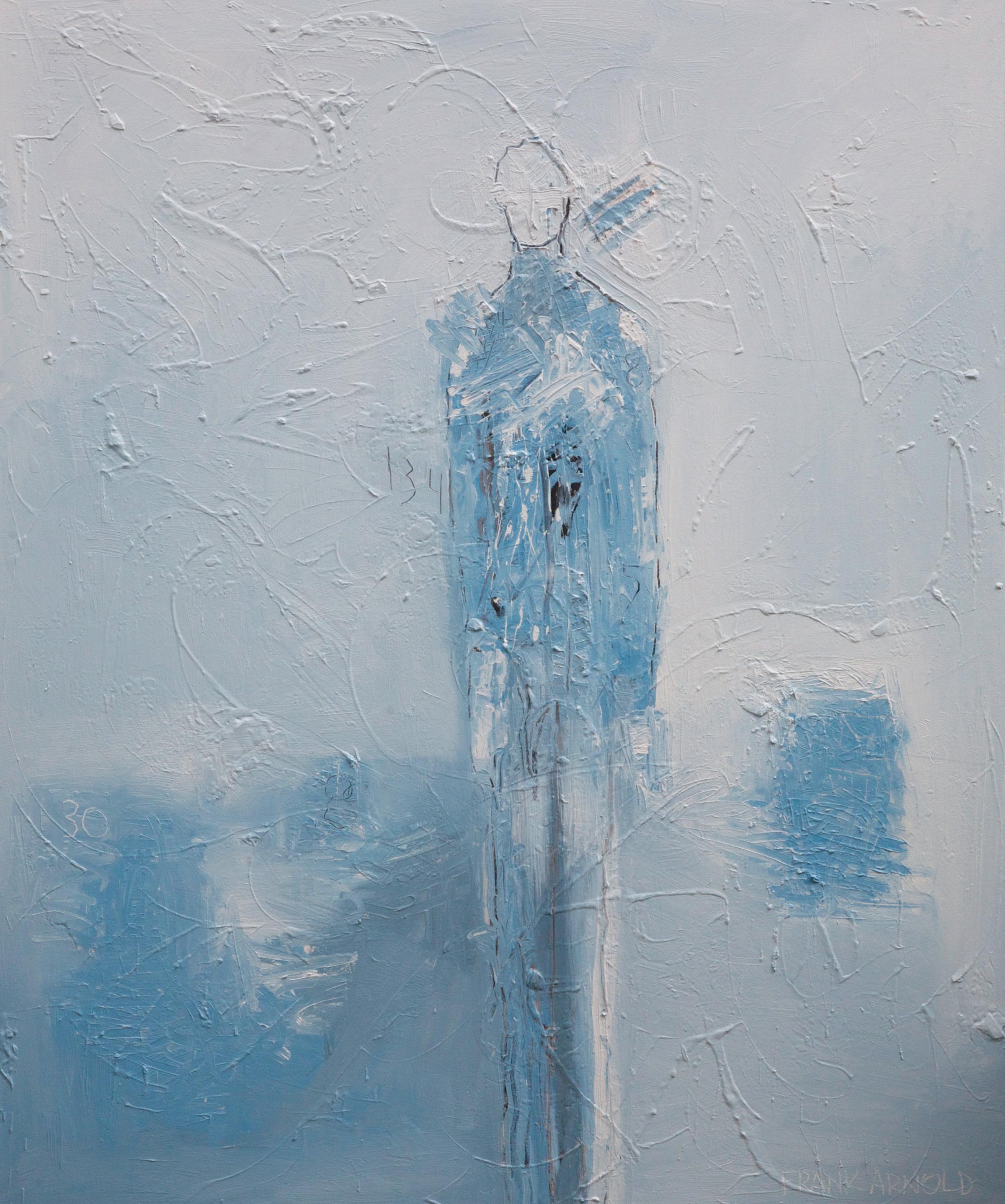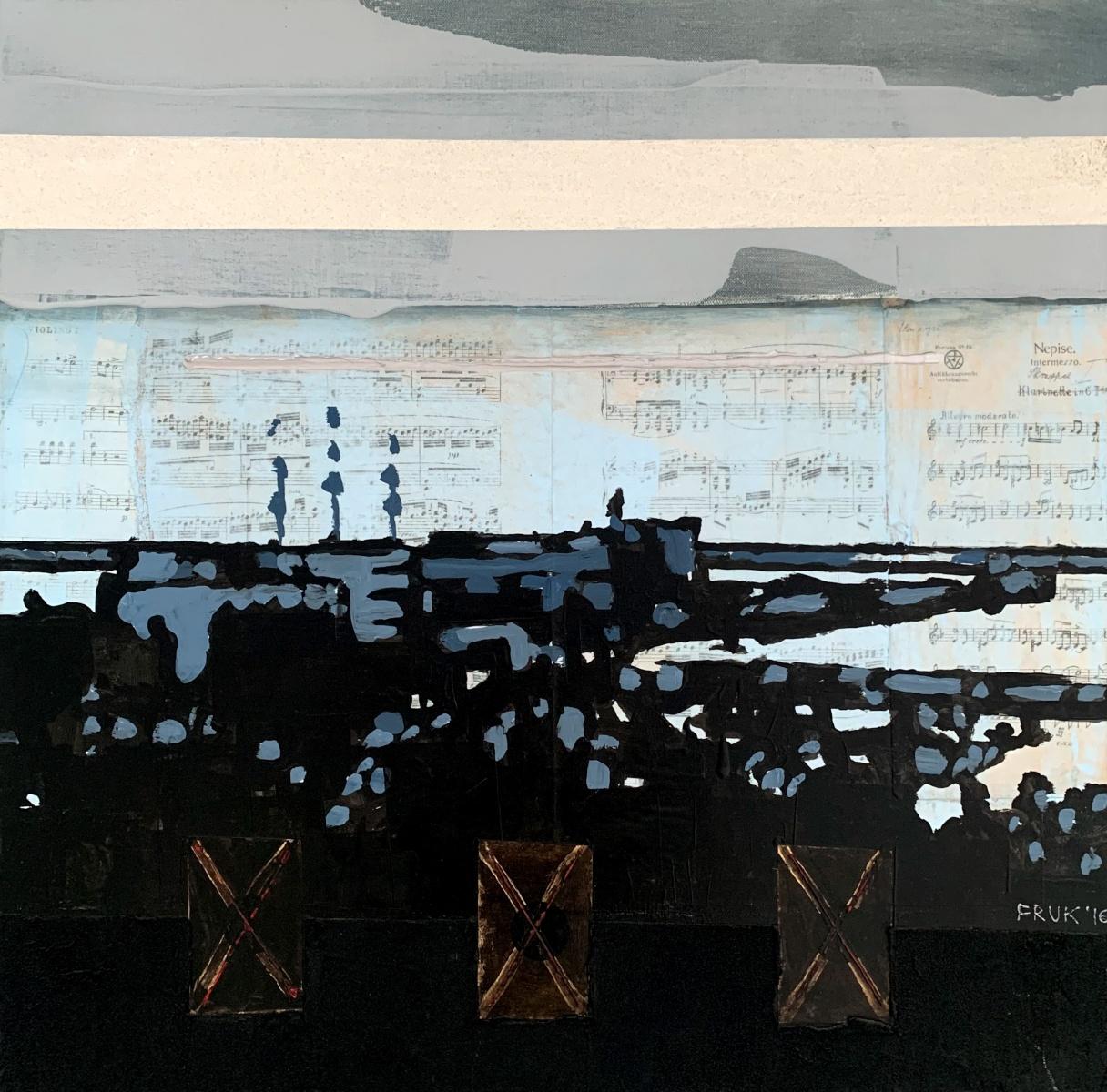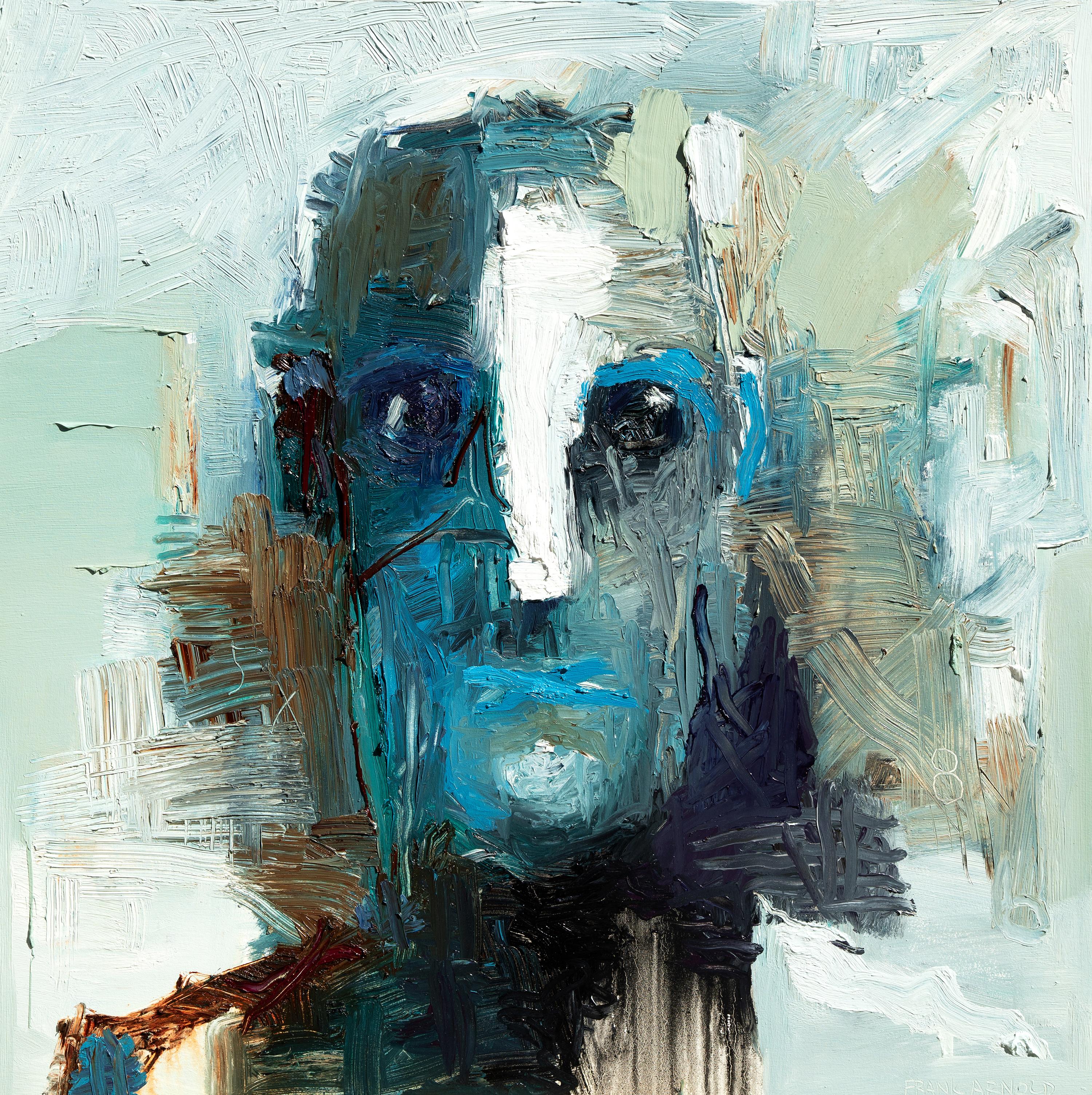Want more images or videos?
Request additional images or videos from the seller
1 of 12
Oskar D'AmicoFisherman at Duskc.1960
c.1960
About the Item
Oskar D'Amico (1923-2003). Fisherman at Dusk, c.1960. Oil on linen canvas, 16 x 30 inches; 18 x 32 inches (frame). Signed lower right. Excellent condition with no damage or conservation.
Biography:
Oskar Maria D'Amico (February 22, 1923 – May 3, 2003) was an active Italian artist in Rome, Naples, Lanciano, Cisterna, Milan, Gallarate, Torino, Zagabria, Paris, Toulouse, Melun, Carenac, Maubeuge, Madrid, Barcelona, Zaragoza, Budapest, Győr, Mexico City, Cuernavaca, Morelia, Toronto, New York City, Philadelphia, Los Angeles, San Francisco, Miami, Denver, Santa Fe, Albuquerque and Socorro, between 1943 and 2003.
He is considered a Nomad artist because of his ability to work in various styles. He had three major periods in his artistic life: Figurative, Materic and Geometric. [1]He also was an outstanding art director for more than 75 epic movies. D'Amico had a very outgoing personality. He was a non-conformist, which was reflected in his work throughout his life. D'Amico was born in CastelFrentano, Italy, a small village in Abruzzo. At a young age, he felt he had to leave and dive into the big world. After being a seminarist with the Salesiani during World War II, he left Naples, where he studied architecture, and began a great adventure in Rome.
He specialized at the time in decorating nightclubs and bars, and invented a special type of double ceiling to hide the lights. D'Amico, who was self-taught as a teenager in drawing and painting, burst onto the filmmaking scene in Rome when an art director asked him to do a perspective of a set design. Soon other moviemakers were calling him.[2]
D'Amico was an art director on 75 films including two by Orson Welles. D’Amico was able to create a real marble floor in the set of the palace of the King Saul, in "David and Goliath" directed by Orson Welles. Art directors previously painted a simulated marble on top of concrete due to the cost of the real thing. D'Amico became an associate of Jadran Films in ex-Yugoslavia, which specialized in Roman and Egyptian constructions.
While an art director, he never stopped painting. His faceless clowns, reflecting the people who had no identity after World War II, were a big success. In the early 1960s, D'Amico moved with his family to Toronto, Canada, another place he felt was too small. He left for Philadelphia and New York City, which affected his work. He turned his focus to abstract, and for more than a decade created abstract Expressionist paintings "on the plane of all matter" that he called "Materic". The Materic style, which he invented, was done in several media and could not be changed once on the canvas. The paintings were very well received. D’Amico sold more than 400 in Philadelphia and New York City. Unfortunately he had to stop doing the Materics because the colors he used were harmful to his liver.
In the mid 1970s, he returned to his architectural roots and developed a new vision for Abstract Constructivism using just acrylic colors. Presented in Paris by his French Art dealer, Francoise Tournier, at the Grand Palais de Paris, and in Mexico City, D'Amico's interpretation of the "New Geometry" was widely admired. In 1983, when he presented the work at the Bodley Gallery, people whispered that he had the potential to be the new Picasso because of his eclecticism and the Nomad nature of his styles.
In 1987, D'Amico abandoned the gypsy life and settled in New Mexico. Albuquerque was the perfect place to dedicate himself 100 percent to his work.[3] There were no distractions and a good climate that reminded him of his beloved Cuernavaca in Mexico. Staying in close contact with his French art dealer Tournier, D’Amico had several shows in Denver at the Helen Karsh Gallery and in Albuquerque at the Black Swan and Café Galleries.
At least once a year, D’Amico went to Europe to immerse himself in the antique world and visit museums and galleries. In 1992, visiting Tournier at the Castle of Saint Cirq Lapopie, he met the man who founded the MADI movement in 1940, Carmelo Arden Quin. D’Amico aligned himself with MADI because he had been working for years in multi-media with an abstract, geometric focus. D’Amico established the first MADI gallery in the U.S., [4]Arte Struktura International Gallery, where he gathered all artists working in the same style and encouraged them to do group shows within the MADI rules.
In 1998, D’Amico’s health declined and he gave up the gallery. His many years of using toxic paints caught up with his liver, and he had energy only to do his own work. He painted up to the last day he was able to stand or sit, and always said that he lived off art and love. D’Amico was very successful in France, where people are known to be critical of artists, especially if those from the U.S. D’Amico was a naturalized U.S. citizen. He had several shows in France, starting in Paris and to the south.
Claude l’Houmeau wrote in “Le Figaro:” “D’Amico is an experienced traveler along the intricate pathways of painting, having thus obtained a good formula which he ably exploits with his surprising virtuosity. Having been also an architect, he is able to construct perfectly and to maintain the balance and rhythm within his compositions which can be literally moved back and forth, up and down, and continue to look well in any position.
John Tancock, director of Sotheby's Modern Art Department in New York City, said “… Every one of his works penetrates deeply into the axial composition and its interrelation is punctualized by the great divergency of color and tonality and the accumulated experience, by means of which D’Amico handles his vocabulary of forms. Thanks to the methodical and constant study D’Amico carried out, he produced a successful series of paintings which have taken on a new monumentality without impairing the vitality that is D’Amico’s main characteristic as a painter.”
- Creator:Oskar D'Amico (1923 - 2003, Italian)
- Creation Year:c.1960
- Dimensions:Height: 16 in (40.64 cm)Width: 30 in (76.2 cm)Depth: 1 in (2.54 cm)
- Medium:
- Movement & Style:
- Period:
- Condition:
- Gallery Location:Wilton Manors, FL
- Reference Number:1stDibs: LU24523581842
About the Seller
4.9
Vetted Seller
These experienced sellers undergo a comprehensive evaluation by our team of in-house experts.
Established in 2007
1stDibs seller since 2015
321 sales on 1stDibs
Typical response time: 3 hours
- ShippingRetrieving quote...Ships From: Wilton Manors, FL
- Return PolicyA return for this item may be initiated within 7 days of delivery.
More From This SellerView All
- Tattoo Parlor Sailor (WPA era woman artist)By Helen MaltaLocated in Wilton Manors, FLHelen Malta (b.1912). Tattoo Parlor, ca. 1935. Oil on canvas, 20 x 33 inches. Signed lower right. Metropolitan Museum of Art reproduction rights stamp on r...Category
1930s Abstract Abstract Paintings
MaterialsCanvas, Oil
- Going to Market (Taxco). Monterey CA artist.Located in Wilton Manors, FLMarjorie Doolittle Hodges (1888-1972). Going to Market, ca. 1955. Oil on canvas, measuring 18 x 22 inche; 24 x 28 inches framed. Signed lower right. Signed and titled on verso. Excellent condition. orn in Nebraska on Jan. 15, 1888, Hodges was educated at the University of St Louis and Columbia University. Upon moving to the Monterey Peninsula in 1912, she studied at the Carmel Art Institute. From 1917 to 1932 she taught in the Los Angeles public schools. She started a greeting card company called House of K.H.S. in Los Angeles together with Vivian Stringfiled and Fannie Kerns. They made handpainted greeting cards, using wood block print methods, for all seasons of the year. Inspired by the Arts & Crafts Movement and incorporating modernist aesthetics, they used their skills to produce wonderful one-of-a-kind cards. Not only were they friends, artists, and business owners, they took part in a three woman exhibit at the Museum of History, Science, and Art, Los Angeles (now LACMA) in 1918 titled An Exhibit of Decorative Landscapes by Fannie M Kerns, Vivian F. Stringfield, and Marjorie Hodges. After her marriage to Robert Doolittle in 1932, she returned to the Monterey Peninsula where she further studied with Armin Hansen and Ralph Johonnot...Category
Mid-20th Century Abstract Impressionist Figurative Paintings
MaterialsLinen, Oil
- Fiddler and DancersLocated in Wilton Manors, FLShay Rieger (1923-1975). Fiddler and Dancers, 1975. Oil on canvas, 38 x 50 inches. Some ares of paint loss and flaking as documented in detail photos. No tears or punctures in canvas...Category
1970s Abstract Abstract Paintings
MaterialsOil
- Seated FigureBy Alan TompkinsLocated in Wilton Manors, FLBeautiful figural abstraction by American artist, Alan Tompkins (1907-2007). Seated Figure, 1956. Oil on Devoe academy board measures 11 x 13 inches; 15....Category
1950s Abstract Figurative Paintings
MaterialsBoard, Oil
- Mother and ChildBy Bruno LucchesiLocated in Wilton Manors, FLBruno Lucchesi (b.1926). Mother and Child, ca. 1960. Oil and charcoal on sized paper mounted to masonite, measuring 11 x 21 inches; 15.5 x 25.5 inches in original gold leaf frame. Si...Category
Mid-20th Century Abstract Figurative Paintings
MaterialsMasonite, Oil, Paper
- Female DancerLocated in Wilton Manors, FLBeautiful mid-century painting of a female dancer by J. Steven. Oil on canvas measures 12 x 30 inches, 21 x 39 inches framed. Signed lower left with arti...Category
Mid-20th Century Abstract Figurative Paintings
MaterialsOil
You May Also Like
- Gdynia 2 - Contemporary Figurative & Abstract Oil Painting Black & WhiteBy Lukasz FruczekLocated in Warsaw, PLoil, acrylic and collage on canvas Gdynia is Polish city at the Baltic Sea A Polish artist, Lukasz Fruczek was born in 1975. He studied at the Fine Arts School in Gdansk, with a s...Category
2010s Abstract Abstract Paintings
MaterialsCanvas, Paper, Oil, Acrylic
- Pure 17By Frank ArnoldLocated in Fresno, CA"Pure 17" is an oil on Canvas of sharply contrasting blues on a white field. Frank Arnold is thought by many to be one of the foremost abstract figurative painters and sculptors of o...Category
2010s Abstract Abstract Paintings
MaterialsCanvas, Oil
- Last DanceBy Frank ArnoldLocated in Fresno, CALast Dance is an Oil on Canvas painting in soft, light aqua tones with red/brown accents. Frank Arnold is thought by many to be one of the foremost abstract...Category
2010s Abstract Abstract Paintings
MaterialsCanvas, Oil
- Ruler 58By Frank ArnoldLocated in Fresno, CA"Ruler 58" Oil on Canvas depicts a bold commanding visage in a mixed palette with dominant blues. is a bold visage Frank Arnold is thought by many to be one of the foremost abstract ...Category
2010s Abstract Abstract Paintings
MaterialsCanvas, Oil
- Oil on Canvas “850” by abstract-figurative artist, Frank ArnoldBy Frank ArnoldLocated in Fresno, CA"850" is 72” x 60”. The smokey greens, greys and blues are combined in the heavy hand, brush and knife strokes which characterize much of this artist’s work. Frank Arnold’s paintings...Category
2010s Abstract Abstract Paintings
MaterialsCanvas, Oil
- Mat 58By Frank ArnoldLocated in Fresno, CA"Mat 58" Oil on Canvas with wide range of blue pigment and accents of yellow ochre. Frank Arnold is thought by many to be one of the foremost abstract figurative painters and sculpto...Category
2010s Abstract Abstract Paintings
MaterialsCanvas, Oil
Recently Viewed
View AllMore Ways To Browse
At The Movies
The Fisherman
Antique Canadian Art
Fisherman Art
Paintings At Dusk
Fisherman Painting
Antique Mexican Paintings
Painting Of Fisherman
Fisherman Paintings
War Plane Painting
Painting Set Of 4 Series
Antique Egyptian Art
Antique French Modern Painting Framed
Fisherman Painting Oil
Retro Clown Painting
Miami Dealers
Antique French Abstract Oil
Roman Marble A D





